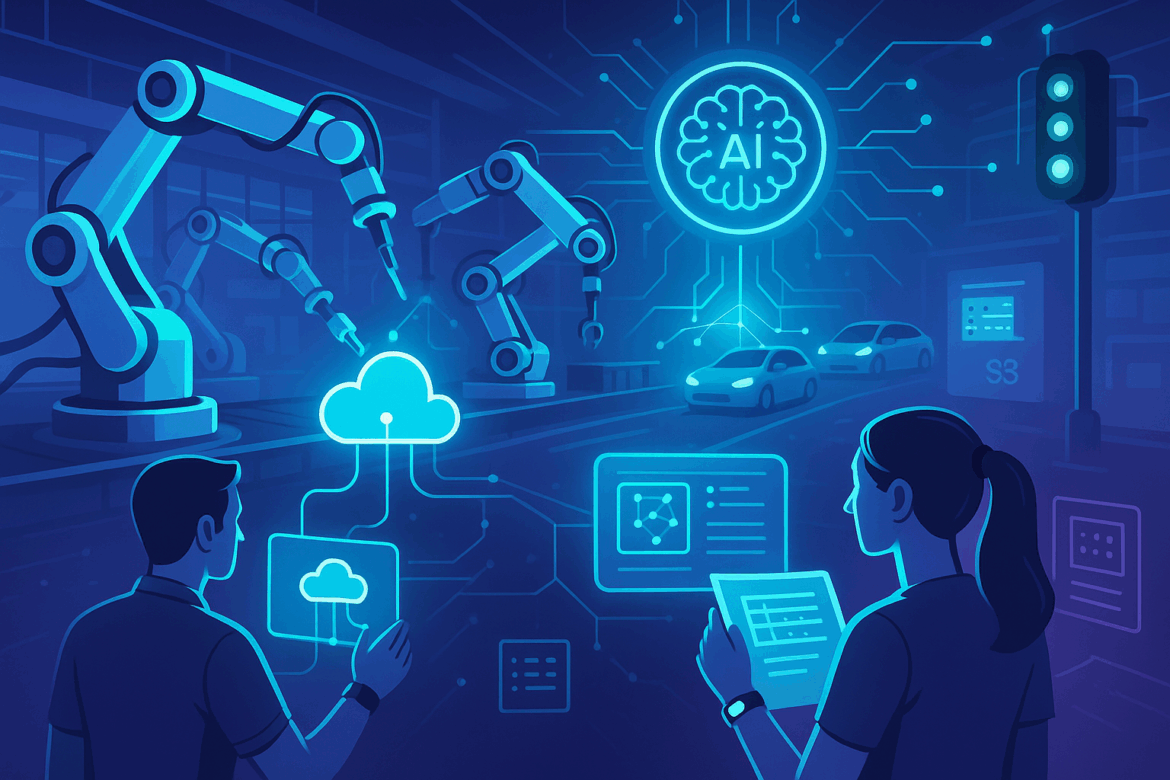In today’s fast-changing tech scene, the merging of physical systems with digital smarts has a big impact on industries. This blend called Cyber-Physical Systems (CPS), stands at the core of modern engineering progress boosting productivity, automation, and new ideas across many fields.
What Are Cyber-Physical Systems?
Cyber-Physical Systems (CPS) combine physical processes with computer algorithms. Put , they are systems where physical parts like machines or sensors work with software and network abilities. This teamwork allows for instant monitoring, control, and decision-making letting systems adapt to changing situations.
Key Features of CPS
- Combining Physical and Digital Parts: CPS mix hardware and software to work together .
- Quick Data Analysis: They can study data right away enabling fast reactions to changes in their surroundings.
- Self-Governing Operation: Many CPS can work on their own choosing what to do without people telling them.
- Connected Communication: Parts of CPS talk to each other through networks often using the Internet of Things (IoT) to connect more.
CPS in the Real World
1. Smart Manufacturing
In today’s factories, CPS keep an eye on machines, figure out when they’ll need fixing, and make production better. This leads to getting more done and less time when machines aren’t working.
2. Healthcare
Medical devices with CPS can keep an eye on patient vitals as they happen, give treatments, and send alerts to healthcare workers about emergencies, which improves patient care.
3. Transportation
Self-driving cars need CPS to find their way, spot obstacles, and make choices while driving, which makes roads safer and traffic smoother.
4. Energy Management
Smart power grids use CPS to match energy supply with demand, add clean energy sources, and find problems in the system.
5. Agriculture
High-tech farming uses CPS to check soil health, run watering systems, and look after crops, which leads to better harvests and saves resources.
Advantages of Using CPS
- Better Productivity: Automation and real-time tracking make operations smoother.
- Safer Operations: Non-stop monitoring can spot and reduce dangers .
- Money Savings: Foreseeing maintenance cuts down on surprise equipment breakdowns.
- Green Practices: Smart use of resources results in less waste and lower energy use.
Hurdles and Things to Think About
While CPS offer many perks, they also bring challenges:
- Safety Threats: More connections can leave systems open to online attacks.
- Hard to Grasp: Building and keeping up CPS needs special know-how and abilities.
- Working Together: Making sure different systems and parts sync up can be tough.
How CPS Fits into the Fourth Industrial Revolution
CPS play a key role in the Fourth Industrial Revolution marked by the merging of technologies that blur the boundaries between physical, digital, and biological realms. By creating systems that are smarter and more responsive, CPS have an impact on industries and open the door to breakthroughs like smart cities, self-driving cars, and cutting-edge robotics.
